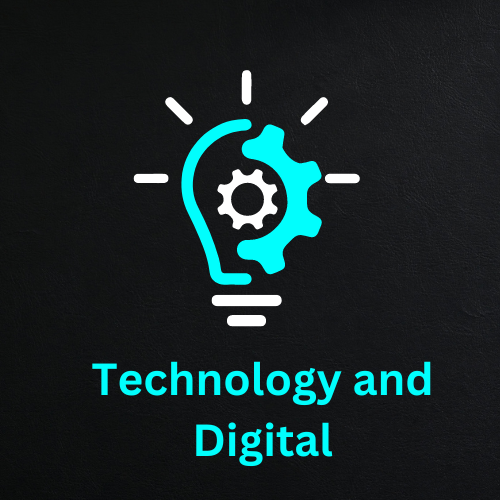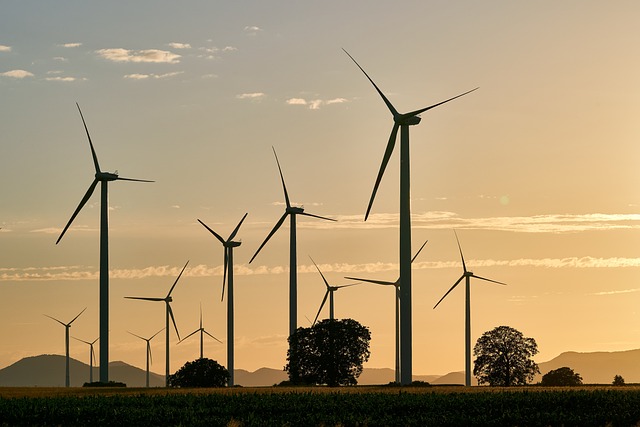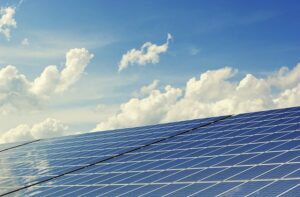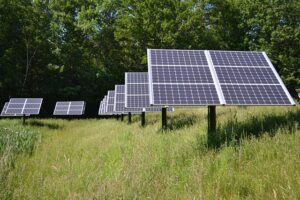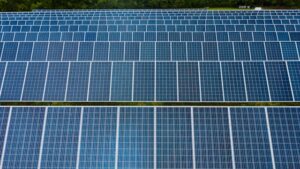
Powering the Future: Exploring Renewable Energy Technologies
Renewable energy is no longer just a buzzword; it’s a crucial part of our future. As we face the pressing challenges of climate change and dwindling fossil fuel reserves, renewable energy technologies offer a beacon of hope. They promise a sustainable, cleaner, and more efficient way to power our world. But what exactly are these technologies, and how are they transforming our energy landscape?
What is Renewable Energy?
Definition and Key Characteristics
Renewable energy comes from natural sources that are constantly replenished. Unlike fossil fuels, which take millions of years to form, renewable energy sources like sunlight, wind, and water are naturally replenished, making them sustainable for the long haul.
Comparison with Non-renewable Energy Sources
Non-renewable energy sources, such as coal, oil, and natural gas, are finite and contribute significantly to environmental pollution. In contrast, renewable energy sources are abundant and produce little to no greenhouse gases, making them a cleaner alternative.
Solar Energy
How Solar Panels Work
Solar panels capture sunlight and convert it into electricity using photovoltaic cells. These cells are made of semiconductor materials, like silicon, that release electrons when exposed to sunlight, creating an electric current.
Types of Solar Panels
- Monocrystalline Panels: Known for their high efficiency and sleek appearance.
- Polycrystalline Panels: Slightly less efficient but more affordable.
- Thin-Film Panels: Lightweight and flexible, suitable for a variety of applications.
Benefits and Drawbacks
Solar energy is incredibly clean and abundant, but it does have its downsides. The initial installation cost can be high, and efficiency depends on weather conditions and geographical location.
Current Innovations in Solar Technology
Recent advancements include bifacial panels that capture sunlight from both sides and solar roofs that seamlessly integrate into buildings. These innovations are making solar energy more efficient and accessible.
Wind Energy
How Wind Turbines Generate Power
Wind turbines harness the kinetic energy of wind, converting it into mechanical energy and then into electricity. The blades of a turbine spin a shaft connected to a generator, producing electricity.
Onshore vs Offshore Wind Farms
- Onshore Wind Farms: Located on land, they are easier to install but can face opposition due to noise and visual impact.
- Offshore Wind Farms: Positioned in bodies of water, they benefit from stronger and more consistent winds but are more expensive to build and maintain.
Benefits and Challenges
Wind energy is one of the most cost-effective renewable sources. However, it can be intermittent and dependent on wind availability.
Future Prospects for Wind Energy
Floating wind turbines and advancements in blade technology are expected to make wind energy even more efficient and widespread in the coming years.
Hydropower
Basics of Hydroelectric Power
Hydropower utilizes the energy of flowing water to generate electricity. Dams or other structures direct water flow through turbines, which spin a generator to produce power.
Different Types of Hydropower Plants
- Run-of-the-River: Utilizes the natural flow of rivers without large reservoirs.
- Storage: Involves large dams and reservoirs to control water flow.
- Pumped Storage: Stores energy by pumping water to a higher elevation during low demand and releasing it during peak demand.
Environmental and Economic Impact
While hydropower is a reliable and clean energy source, it can have significant environmental impacts, including habitat disruption and changes in water quality.
Technological Advancements
Innovations like fish-friendly turbines and small-scale hydro systems are helping to mitigate some of the environmental challenges associated with hydropower.
Geothermal Energy
Understanding Geothermal Power
Geothermal energy taps into the Earth’s internal heat, using it to generate electricity or provide direct heating. This heat is accessed through wells drilled into geothermal reservoirs.
Geothermal Energy Systems
- Dry Steam Plants: Use steam directly from geothermal reservoirs.
- Flash Steam Plants: Convert high-pressure hot water into steam.
- Binary Cycle Plants: Transfer heat from geothermal water to another liquid that boils at a lower temperature.
Advantages and Limitations
Geothermal energy is highly reliable and produces minimal emissions. However, it’s location-specific, requiring proximity to tectonic plate boundaries.
Recent Developments in Geothermal Technology
Enhanced geothermal systems (EGS) and improved drilling techniques are expanding the potential of geothermal energy, making it viable in more locations.
Biomass Energy
What is Biomass Energy?
Biomass energy is derived from organic materials like wood, agricultural residues, and animal waste. These materials can be burned directly or converted into biofuels.
Conversion Processes
- Combustion: Direct burning to produce heat and electricity.
- Gasification: Converting biomass into syngas for power generation.
- Anaerobic Digestion: Breaking down organic matter to produce biogas.
Pros and Cons of Biomass
Biomass is renewable and can reduce waste. However, it can also produce emissions and requires sustainable sourcing to avoid deforestation and other environmental issues.
Innovations in Biomass Utilization
Advancements in bioenergy crops and waste-to-energy technologies are enhancing the efficiency and sustainability of biomass energy.
Tidal and Wave Energy
Basics of Tidal Power
Tidal energy harnesses the gravitational pull of the moon and sun, using tidal movements to generate electricity. This can be done through tidal streams or barrages.
Wave Energy Conversion
Wave energy captures the energy from surface waves and converts it into electricity using various technologies, such as point absorbers and oscillating water columns.
Potential and Limitations
Tidal and wave energy have immense potential due to their predictability and consistency. However, they face challenges like high costs and environmental concerns.
Emerging Technologies
Innovations like underwater turbines and floating wave energy devices are making these forms of energy more feasible and efficient.
Hydrogen Fuel Cells
How Hydrogen Fuel Cells Work
Hydrogen fuel cells generate electricity through a chemical reaction between hydrogen and oxygen, producing only water and heat as byproducts.
Applications of Hydrogen Energy
Hydrogen fuel cells are used in various applications, including transportation, stationary power generation, and portable power systems.
Benefits and Drawbacks
Hydrogen is a clean and efficient energy source, but challenges include high production costs and the need for infrastructure development.
Future Trends in Hydrogen Energy
Green hydrogen production using renewable energy sources and advancements in fuel cell technology are set to revolutionize the hydrogen energy sector.
The Role of Energy Storage
Importance of Energy Storage
Energy storage is crucial for managing the intermittency of renewable energy sources and ensuring a stable power supply.
Types of Energy Storage Systems
- Batteries: Commonly used for short-term storage.
- Pumped Hydro Storage: Large-scale storage using gravitational potential energy.
- Thermal Storage: Storing energy as heat.
Current Challenges and Solutions
Key challenges include cost, efficiency, and scalability. Innovations in battery technology and alternative storage methods are addressing these issues.
Innovations in Energy Storage
Advancements like solid-state batteries and flow batteries are enhancing energy storage capabilities, making renewable energy more reliable.
Grid Integration and Smart Grids
What is Grid Integration?
Grid integration involves incorporating renewable energy sources into the existing power grid, ensuring stability and reliability.
The Concept of Smart Grids
Smart grids use digital technology to manage electricity demand and supply efficiently, integrating various energy sources and storage systems.
Benefits and Challenges
Smart grids improve efficiency and reliability but require significant investment and technological upgrades.
Future Outlook
The development of smart grids and advanced grid management systems is essential for the widespread adoption of renewable energy.
Government Policies and Incentives
Role of Government in Promoting Renewable Energy
Governments play a crucial role in promoting renewable energy through policies, regulations, and incentives.
Examples of Effective Policies
Feed-in tariffs, tax credits, and renewable energy mandates are some examples of policies that have successfully promoted renewable energy adoption.
Incentives for Businesses and Consumers
Incentives like subsidies, grants, and rebates encourage businesses and consumers to invest in renewable energy technologies.
Global Policy Trends
Countries worldwide are implementing policies to reduce carbon emissions and promote renewable energy, driving global renewable energy growth.
Economic Impact of Renewable Energy
Job Creation in the Renewable Sector
The renewable energy sector is a significant source of job creation, offering employment opportunities in manufacturing, installation, and maintenance.
Cost Comparison with Traditional Energy Sources
While the initial costs of renewable energy installations can be high, the long-term savings and environmental benefits make them cost-effective.
Long-term Economic Benefits
Renewable energy contributes to energy security, reduces dependence on imported fuels, and mitigates the economic impacts of climate change.
Case Studies
Examples from countries like Germany and Denmark showcase the economic benefits of large-scale renewable energy adoption.
Environmental Benefits
Reduction in Greenhouse Gas Emissions
Renewable energy significantly reduces greenhouse gas emissions, helping to combat climate change.
Impact on Air and Water Quality
Renewable energy sources produce little to no air and water pollution, improving public health and environmental quality.
Conservation of Natural Resources
Using renewable energy helps conserve finite natural resources, ensuring their availability for future generations.
Success Stories
Countries and communities that have successfully integrated renewable energy showcase its environmental and economic benefits.
Conclusion
Renewable energy technologies are transforming our world, offering sustainable solutions to our energy needs. From solar and wind to geothermal and hydrogen, these technologies are paving the way for a cleaner, greener future. Embracing renewable energy is not just an option; it’s a necessity for the well-being of our planet and future generations.
